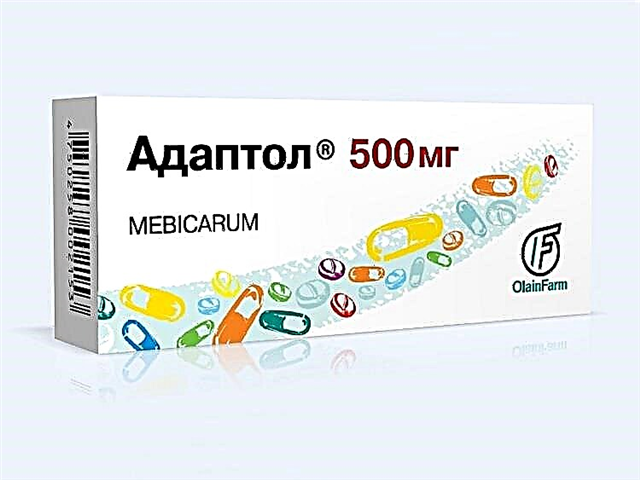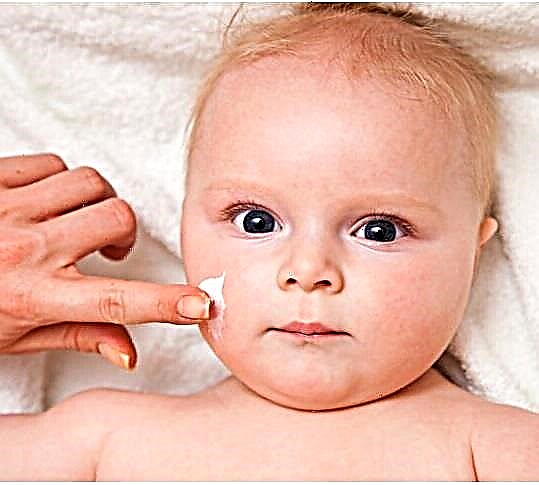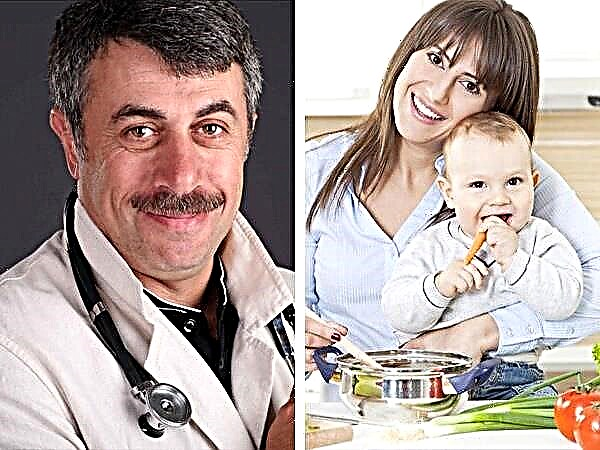One of the most common neurological disorders in children is a concussion. Traumatic brain injuries account for up to 40% of all visits to pediatricians and pediatric neurologists. Over the past decades, there has been a steady increase in the incidence of this disease, which can lead to disability and even death. Therefore, doctors recommend that parents know the first signs of a concussion in children and be able to provide first aid in order to reduce the risk of serious consequences of injury.
What is meant by the term "concussion" and what are its causes in children
Concussion refers to a mild traumatic brain injury and is characterized by the absence of focal brain damage. This pathology is diffuse, all changes occur at the cellular and subcellular level. Thus, identifying a concussion in an adult, and even more so in a child, is a very difficult task, even using modern diagnostic methods.
Most often, boys suffer from this type of injury, and there is a seasonal fluctuation - the spring-summer period is especially rich in various craniocerebral "accidents". There is also a tendency towards an increase in the number of concussions in children of preschool and primary school age. The peak incidence occurs at 8-12 years.
Not only the direct traumatic agent has a negative effect on the brain, in other words: neurons will be affected both at the site of the impact and at a distance from it. At this point, there is a redistribution of cerebrospinal fluid in the ventricular and subarachnoid spaces. As a result, a hydrodynamic shock occurs, which diffusely damages cells. Another link in the pathogenesis of concussion is the displacement and rotation of the cerebral hemispheres relative to the rigidly fixed brainstem.
All this leads to a violation of the vascular tone of the cerebral arteries and veins, increased metabolism in cells (the so-called "metabolic fire"), a change in the permeability of the blood-brain barrier, liquorodynamic disorders, as well as dysfunction of the transmission of impulses from neuron to neuron.
Despite the fact that concussion is a mild form of trauma, pathological changes in the brain, if not properly treated, can lead to disability.
The most common causes of concussion in children under one year old
Most often, children from birth to one year old receive any injuries due to the fault of their parents. This can be a banal oversight and carelessness of young mothers and fathers, who, without thinking about the consequences, leave the babies alone on the bed or changing table, in a stroller, in a highchair and walk away even for a minute.
Also, a child can get a concussion due to excessive motion sickness, aggressive behavior on the part of adults, or even simple tossing up. This type of injury, in which there is no effect of the traumatic agent on the skull, is called the "shaken baby" syndrome.
Causes of trauma in a child aged from one to three years
At this age, the child begins to explore the world around him, learns to walk, run. Therefore, among the causes of concussion, falls from the height of their growth, head bangs on various furniture, etc. come to the fore. At the same time, children do not have a sense of danger, they do not know how to land correctly, putting their hands forward.
Also, do not forget about the facts of violence by adults: a small (according to parents) slap in the face can lead to injury.
Concussion in preschool children
Concussion in preschool children also occurs most often due to unsuccessful landings after a jump, traffic accidents, blows to the head with sports equipment and carousels in playgrounds. Often the cause of injury during this period is a fall from an open window.
Why are schoolchildren so vulnerable to injury?
Students receive various types of trauma, including a concussion, as a result of their carelessness. This happens due to falls from trees, roofs of garages, and extreme sports. Fights contribute a lot to this.

Is concussion in children classified according to severity
According to current standards of care, concussion in children is not classified by severity.
But in order to more accurately describe the patient's condition to a colleague or relatives of the victim, the following gradation of trauma is common among doctors:
- easy degree a concussion of the brain is characterized by the absence of any type of amnesia, the child does not have an impairment of consciousness either at the time of injury or after it, and headache, nausea and other symptoms persist for no more than an hour;
- medium-heavy concussion occurs when children have anterograde amnesia and pronounced cerebral symptoms with preserved consciousness;
- severe degree Concussion in children is manifested by all the key symptoms inherent in this type of injury.
The most common symptoms of concussion in children
The symptoms of a concussion in schoolchildren are practically the same as those seen during trauma in adults. The child can clearly tell what happened to him and what his state of health is at the moment. It is much more difficult to notice and identify the first signs of a concussion in a child under three or four years old, when the child cannot yet describe his feelings.
General cerebral symptoms, as the first signs of concussion in children
The most common symptoms of a child's concussion are headache, vomiting, loss of consciousness, and impaired memory. But not only mild traumatic brain injury has such signs. Therefore, it is important to know the characteristics and characteristics of each of them.
Headache
Headache with concussion has a bursting diffuse character due to increased intracranial pressure. Sometimes complaints of dizziness appear, which does not depend on the position of the body. Young children will experience irritability, rapid mood swings, tearfulness, sleep disturbance in the form of drowsiness during the day and insomnia at night. During this period, the child tries to avoid noise and bright light, which usually intensify the headache.
Nausea and vomiting
Another manifestation of cerebrospinal fluid hypertension is nausea and vomiting, which do not depend on the fact of eating. Babies in the first months of life may experience sudden repeated regurgitation. Such vomiting does not bring relief, and nausea can persist for up to several days.

Impaired consciousness
Concussion is almost always accompanied by short-term loss of consciousness, which usually does not exceed ten minutes. In young children, this fact may go unnoticed; adults may think that the child has just calmed down for a couple of seconds. Recovery of consciousness can be marked by screaming or crying.
In schoolchildren, one of the criteria for concussion is memory impairment in the form of anterograde, retrograde, or congrade amnesia. That is, the events that occur after the injury, before it, or the incident itself that caused the concussion, are forgotten, respectively.
Concussion symptoms found on detailed neurological examination
The above symptoms can also be detected by parents, the remaining specific signs of concussion in children can only be determined by a qualified specialist when examining the neurological status of a small patient.
Vegetative dysfunction
Concussion also entails disruption of the autonomic division of the nervous system. In this case, the following symptoms are observed:
- excessive sweating, especially around the palms and feet;
- pallor, or even cyanosis, of the distal extremities;
- subfebrile condition (increase in body temperature in the range from 37.1 to 38C). Often this symptom is asymmetric: body temperature will differ in the left and right armpits;
- fluctuations in blood pressure and heart rate, which are usually higher than normal for a given age of the child;
- "Game of capillaries" is a symptom indicating a violation of vascular tone. It is manifested by a sharp change in pallor on the face to a bright blush.
Transient small focal symptoms
Concussion is also characterized by the presence of micro-focal neurological symptoms, which is a consequence of minor hemorrhages and edema of the brain substance. Damage to neurons in mild traumatic brain injury is minimal, so these signs can be observed only within 3-4 hours from the moment of its receipt.
These include:
- anisoreflexia, that is, the asymmetry of tendon and periosteal reflexes;
- horizontal small-amplitude nystagmus;
- oculomotor disorders in the form of limiting the movement of the eyeballs to the sides, which is accompanied by pain and double vision;
- vestibular dysfunction, manifested by unsteadiness while walking and in the Romberg position;
- decreased muscle tone in one half of the body;
- violation of the corneal (corneal) reflex.
Such symptoms can hide a more severe traumatic brain injury, which is a threat to children's life. Therefore, at the slightest suspicion of a disease, immediately seek medical attention.
Are there complications after a concussion in children?

Although the concussion is not accompanied by focal brain damage, the resulting microstructural damage often does not go unnoticed. After a mild traumatic brain injury, post-concussion syndrome, accompanied by headache, intellectual and mental disorders, dizziness, emotional lability and dyssomnia, can be observed for 3-3.5 months. After this time, the complaints usually disappear.
Repeated concussions lead to the development of post-traumatic encephalopathy, which is already a persistent consequence of trauma.
Its main symptoms are:
- headache, the intensity of which is greatest after sleep. Often such children have meteorological dependence;
- increased intracranial pressure, accompanied by cerebrospinal fluid-hypertensive paroxysms;
- post-traumatic epilepsy, which is usually manifested by partial seizures with secondary generalization;
- post-traumatic parkinsonismarising against the background of prolonged hypoxia of the subcortical structures of the brain;
- vestibular disorders (unsteadiness when walking, dizziness);
- vegetative disorders;
- intellectual-mnestic dysfunction (memory loss, deterioration in concentration, mental viscosity). In young children, it is manifested by a delay in neuropsychic development, in schoolchildren - by poor assimilation of educational material, etc.;
- psycho-emotional disordersthat include some personality change. A child who was previously calm and persevering becomes irritable, crying, depression may be observed;
- disseminated cerebral microsymptomatology (anisoreflexia, asymmetry of muscle tone, etc.).
In order for the likelihood of developing the consequences of a concussion to be minimal, it is necessary at the first signs of pathology to consult a neurologist to receive adequate treatment.
First aid tactics for suspected concussion in a child
If you notice the symptoms of a concussion in a child, then it is very important to correctly provide first aid so as not to harm him with your actions. After all, the wrong tactics of behavior of adults in this situation can lead to a worsening of the victim's condition.
So, to reduce the risk of further damage to brain cells, you need to:
- lay the child on a horizontal surface. If there is a suspicion of spinal injury, then the patient should not be moved in any case;
- do not give medications to children on their own, since due to the action of some of them, the clinical picture of the disease changes and diagnosis becomes difficult. The most that you can do is apply a bandage if the soft tissues of the head are damaged and apply cold for a short time;
- observe the condition of the child: you need to remember whether there was a loss of consciousness, how long it lasted, whether there were convulsions or vomiting. By providing this information to the doctor, you will facilitate the task of making the correct diagnosis.
If you suspect a concussion in a child, immediately call an ambulance, do not expect the victim's condition to worsen.
Diagnostic measures
Diagnosing a concussion in children is a difficult task even for an experienced neurologist. Since, unlike a more severe traumatic brain injury, this pathology is not characterized by structural changes in the brain tissue, detected using the available research methods. It is also very difficult to collect complaints and a reliable medical history in a child.
Neurological status examination
During the initial examination, the pediatric neurologist collects complaints, life history and illness. Young children are not able to provide this information, therefore, everything that happened to the baby should be well remembered and then those who were next to the child at the time of the injury should inform the doctor.
The specialist will be interested in the following questions:
- Under what circumstances did the injury occur?
- Was the child unconscious, limp, or crying out loud?
- Have you had vomiting or cramps after hitting your head?
- Before this incident, were there any head injuries, etc.
If the doctor manages to collect a reliable anamnesis, then this will greatly facilitate the diagnosis and allow prescribing the correct treatment.
Skull X-ray
Skull X-ray, or craniography, is a mandatory examination for head trauma in children. The presence of cracks or fractures in the bones of the skull excludes concussion.
Ultrasound
Thanks to the open fontanelle, babies can conduct a neurosonographic study, which will exclude contusion foci in the brain tissue, the presence of hematomas in the cranial cavity, as well as an increase in intracranial pressure. Older children undergo echoencephaloscopy, which indirectly assesses the state of the brain by the M-echo response. With a concussion of the brain, its displacement does not occur, which indicates the absence of a more severe traumatic brain injury.
EEG
An electroencephalogram is a method of recording the electrical potentials of the brain. With a concussion, a change in the α-rhythm is revealed, namely, its unevenness, zonal differences disappear. Complexes of sharp waves can also be detected. The use of provocative tests (hyperventilation, etc.) can cause paroxysmal slow-wave activity.
CT or MRI

When carrying out neuroimaging diagnostic methods (CT or MRI), focal changes in the brain tissue or expansion of the ventricular system, subarachnoid space are not detected.Signs of edema of the brain or its membranes detected by MRI can serve as an indirect criterion for concussion.
Ophthalmologist consultation
The complex of mandatory diagnostic measures for concussion in children includes an ophthalmologist's consultation. When examining the state of the fundus, a pink disc of the optic nerve with fairly clear boundaries is observed, vascular tone most often remains unchanged. Occasionally, a slight venous plethora is detected.
It must be remembered that the diagnosis of any traumatic brain injury must be carried out by a qualified specialist, since the health of your child depends on it.
Treatment of concussion in children. The main groups of drugs
Concussion in children provides for treatment only in a hospital setting, since imaginary well-being may turn out to be a "bright gap", during which the formation of an intracranial hematoma occurs.
One of the key points in the treatment of concussion in a child is the provision of a medical and protective daily routine. It consists in bed rest, the absence of psycho-emotional stress, it is necessary to exclude watching TV and using phones, tablets, etc. The course of treatment is usually 5-14 days.
For mild traumatic brain injury, the following groups of drugs are indicated:
- dehydration agents (10% sodium chloride solution, lasix, furosemide, hypothiazide);
- vascular funds (cavinton, trental, pentoxifylline, nicotinic acid, aminophylline);
- B vitamins (combilipen, compligam B, milgamma);
- desensitizing agents (suprastin, tavegil, diprazine, diphenhydramine);
- neurometabolites (Cortexin, Actovegin, Cerebrolysin);
- neuroprotectors (Ceraxon, Pharmaxon, Gliatilin, Gleacer, Cerepro);
- nootropics (picamilon, piracetam, lucetam, thiocetam);
- sedatives (glycine, tincture of valerian, motherwort, peony).
In the recovery period after a concussion, it is advisable to use physiotherapeutic procedures (electrosleep, magnetotherapy), as well as reflexology (acupuncture), which will reduce the risk of developing complications of trauma.

Conclusion
No matter how much the parents would like to protect their children, sometimes traumatic situations arise that lead to a concussion. Therefore, it is very important to know the first signs of pathology, as well as the required minimum of emergency care for this disease. Your competent behavior during such an incident will avoid a serious danger to the child's health.



